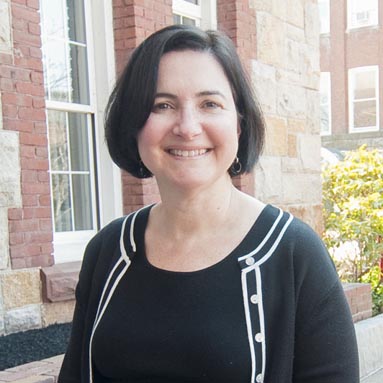We should once again expand opportunities for higher education in the United States for foreign students, including those from China, and encourage them to come to the U.S., according to WPI Professor Jennifer Rudolph, an expert on modern Chinese political history.
Rudolph, who teaches Asian history and international and global studies and is director of WPI’s China Hub, recently hosted the annual CHINA Town Hall, a joint program sponsored by the National Committee on U.S. China Relations (NCUSCR) and select local hosts like WPI.
The national portion of the event, held via Zoom, featured NCUSCR president Stephen Orlins interviewing renowned investor Ray Dalio, New York Times bestselling author and founder of Bridgewater Associates, the world’s largest hedge fund. Dalio has been involved with China through business and philanthropy for 35 years and has keen insights into its economy and functioning. After a question-and-answer session with Dalio, the WPI program commenced, also via Zoom, with brief talks focusing on critical aspects of the U.S.-China relationship.
Rudolph discussed tensions in the Taiwan Strait; Professor Maria Adele Carrai of NYU Shanghai presented on the alternative to the U.S. development model China presents to Africa; and Professor Michael Szonyi of Harvard—originally slotted to discuss the U.S. election—instead countered Dalio’s perspective of the state of U.S.-China relations as transaction-based, profit-motivated, and values-free. A lively discussion based on student questions ensued, with a number of questions focused on Chinese students in the U.S.
U.S. openness is a key strength in STEM higher ed
During the Q&A panel, Rudolph noted that the U.S. must maintain its leadership in higher education, pointing out that the openness of the U.S. system constitutes one of its major strengths. She also said that bringing in international students contributes to the vitality of thought and innovation on campuses. This is especially the case in STEM fields, as the number of U.S. STEM students is insufficient to support the country’s vibrant tech-based industries. Students from China play a big part in populating our tech ecosystem, she said—in 2020, more international first-year students in the U.S. came from China than from any other country. Many of them, both undergraduate and graduate, end up contributing to U.S. businesses and STEM-based initiatives after graduation.

Szonyi pointed out that it is often assumed that the numbers of STEM graduates are equitably distributed between the two countries, but China has five times more STEM students than the U.S., he said. “If America closes off, the U.S. loses the tech war,” Szonyi said. “It is self-defeating.”
International students also contribute a significant portion of higher education institutions’ revenue flow, Rudolph said, pointing out that many tuition-dependent universities have become accustomed to the revenue brought in by international student tuition.
The U.S. relationship with China is the single most important bilateral relationship in the world today, Rudolph continued. China is the main trading partner of the U.S. and its largest geopolitical rival, making understanding China’s political and cultural history and current circumstances critical to solving the world’s great problems. Those problems include creating stability in the Asia-Pacific region, fighting climate change, ensuring food security, and stemming nuclear proliferation.
To increase understanding of China, Rudolph and Szonyi co-edited, The China Questions: Critical Insights into a Rising Power (Harvard University Press, 2018), which presents a series of questions answered in op-ed style by top China experts in accessible prose for a general audience. Now, along with Carrai, they are working to further increase Americans’ understanding of the U.S.-China relationship with their current project, The China Questions II: Critical Issues of the US-China Relationship, slated for publication early next year.


